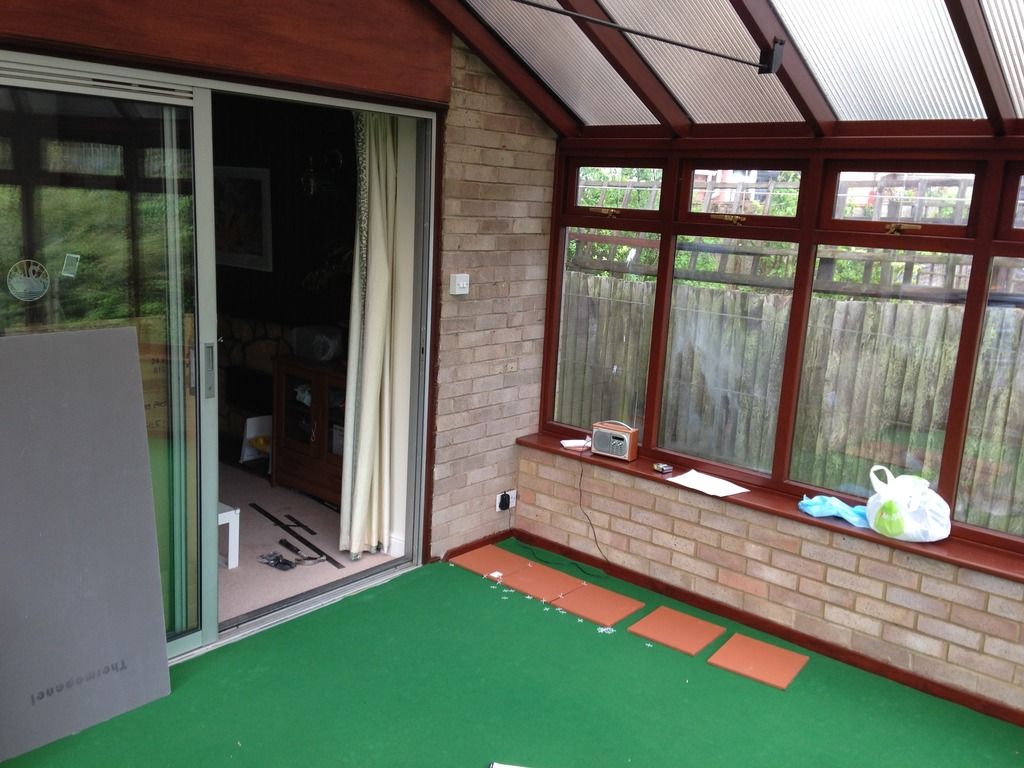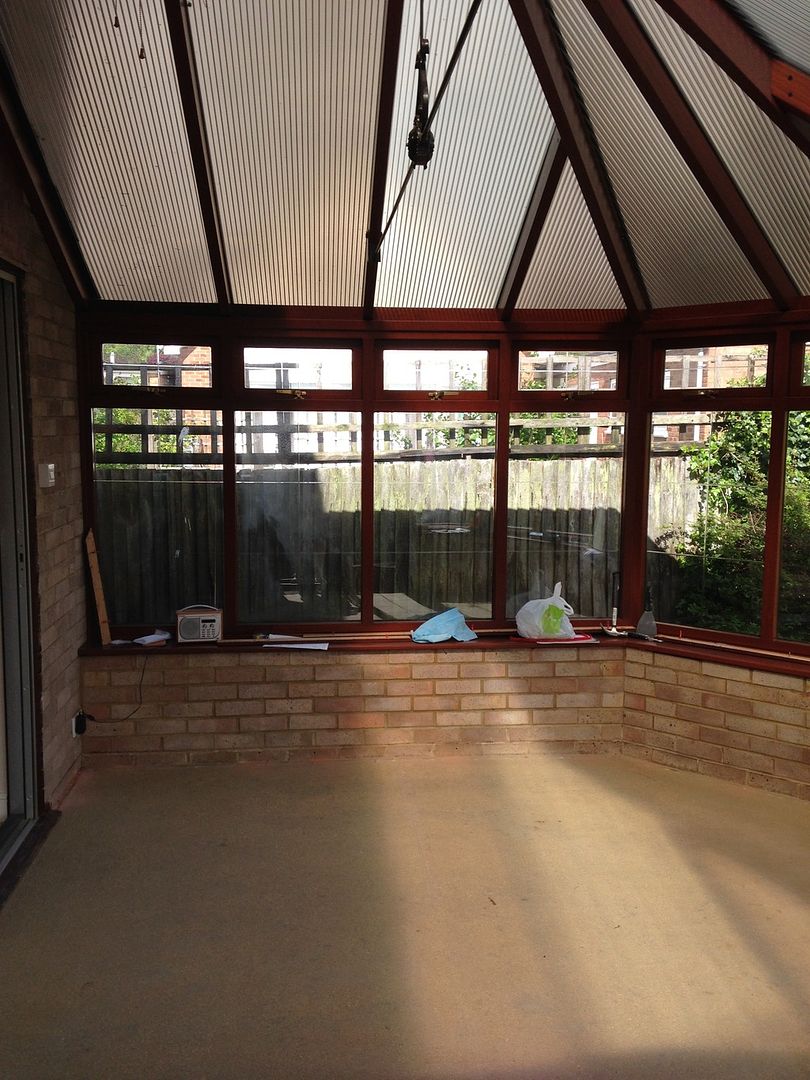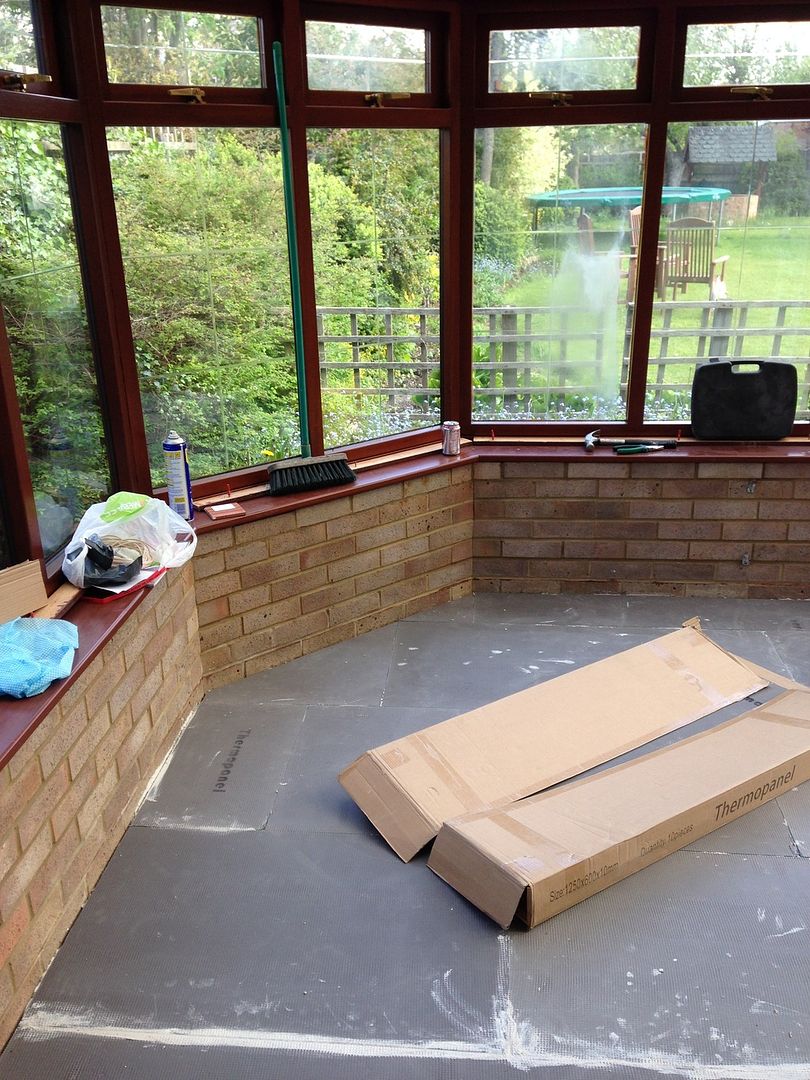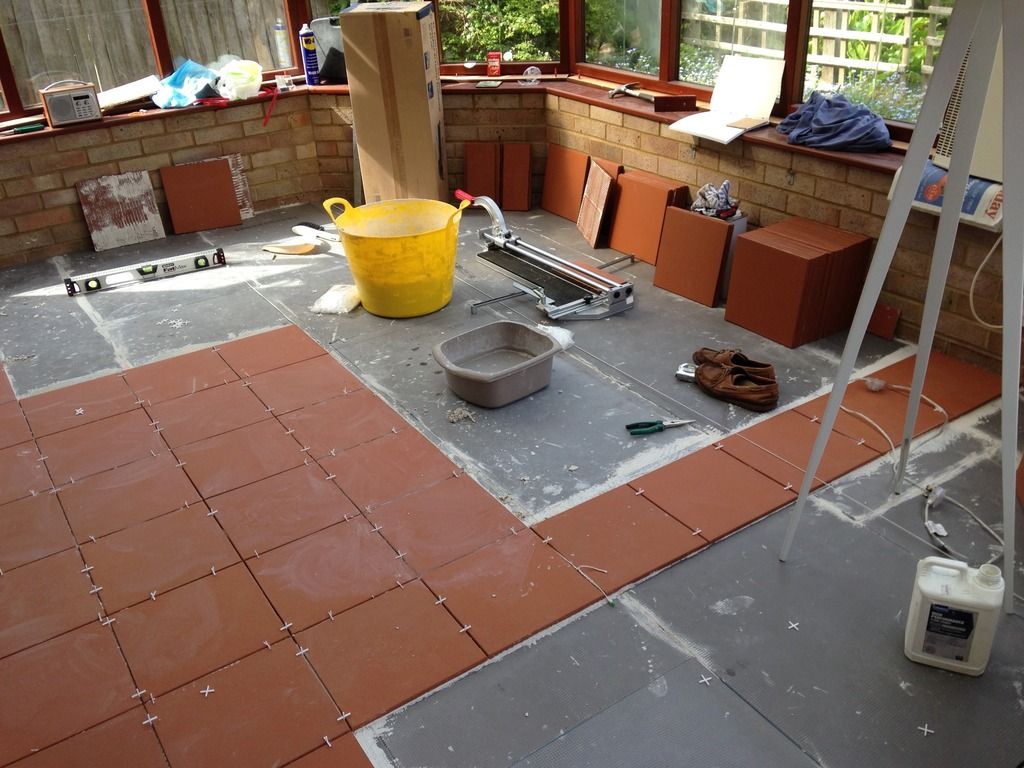Tiling on concrete floor
Discussion
Hi everyone, I have a conservatory with a horrid green thin felt-like carpet and underlay on the floor. Underneath is nice flat concrete as far as I can tell from pulling up the corner.
I'm intending to tile it with some terracotta/quarry tiles. Do I need to do anything first or can I tile straight on to the concrete? I have done some tiling successfully before, but only walls onto a surface that I had just removed old tiles from.
Thanks!
I'm intending to tile it with some terracotta/quarry tiles. Do I need to do anything first or can I tile straight on to the concrete? I have done some tiling successfully before, but only walls onto a surface that I had just removed old tiles from.
Thanks!
Thanks for the replies, and yes I can see that keeping the mud thick to even out inconsistencies makes sense. I did similar on some of the kitchen walls I did.
Why prime it/put hardener on it?
Are there any options for thin insulation of the slab? The underfloor heating is a nice idea, but I'm inclined to keep it simple and for people to wear slippers if they can't cope.
Why prime it/put hardener on it?
Are there any options for thin insulation of the slab? The underfloor heating is a nice idea, but I'm inclined to keep it simple and for people to wear slippers if they can't cope.
Thanks for the tips on the edging, I hadn't thought of the slab moving slightly vs the walls. As far as I know it's just a slab with nothing underneath it. It's the floor of the conservatory in the house I've moved to recently. It's probably about 10 years old, and a reasonably nice conservatory (hard wood), although it has a plastic roof rather than glass.
What's the difference between insulated tile backer and XPS insulation? These do seem like a good idea, and 10mm should be easy enough to deal with.
What's the difference between insulated tile backer and XPS insulation? These do seem like a good idea, and 10mm should be easy enough to deal with.
voicey said:
I stuck down 10mm XPS insulation onto our slab with a cement based tile adhesive. Once that had gone off I then stuck the tiles down to the XPS with the same adhesive. Dead easy and the tiles are lovely to walk on.
Is that straight onto something like this? http://www.ebay.co.uk/itm/10mm-UNDERFLOOR-UNDER-FL...Is there not a little movement in it? Why are there purpose made 'tile backer boards (XPS)' if this normal XPS is ok?
Esseesse said:
voicey said:
I stuck down 10mm XPS insulation onto our slab with a cement based tile adhesive. Once that had gone off I then stuck the tiles down to the XPS with the same adhesive. Dead easy and the tiles are lovely to walk on.
Is that straight onto something like this? http://www.ebay.co.uk/itm/10mm-UNDERFLOOR-UNDER-FL...Is there not a little movement in it? Why are there purpose made 'tile backer boards (XPS)' if this normal XPS is ok?
m4ckg said:
Google primer for concrete floors and you'll get the correct answer. Under no circumstances use pva to prime the floor
Can someone confirm that this stuff that Wickes sell is appropriate? It's the last thing I have to buy, I have a load of Keraflex being delivered on Friday and all the tiles, tile sealer, and backed XPS are waiting in the garage. 
http://www.wickes.co.uk/Wickes-High-Performance-Fl...

stanwan said:
Esseesse said:
Is that straight onto something like this? http://www.ebay.co.uk/itm/10mm-UNDERFLOOR-UNDER-FL...
Is there not a little movement in it? Why are there purpose made 'tile backer boards (XPS)' if this normal XPS is ok?
XPS foam core boards have a little give and aren't recommended for extreme point loads (nor are tiles advisable in these cases).Insualted Tile backer boards are usually XPS core with fibre reinforcement and a concrete facing. The core is waterproof and insulating and the surface gives an excellent adhesion to tile adhesive. XPS foam doesn't bond well to tile adhesive...Is there not a little movement in it? Why are there purpose made 'tile backer boards (XPS)' if this normal XPS is ok?
You want to achieve 100% coverage with underfloor heating to provide the best heat transfer. I've tried using single part flex but it's hard to compress fully and level the tiles. May I suggest using stone and tile PTB - it is thinner compresses easily and will give proper coverage. Mix up 5 kg batches as it is a rapid set..

I understand that this is suitable to stick to a concrete slab, and then tile straight on top of. Is that right?
stanwan said:
That board looks fine. You will want to prime the concrete - it'll suck the moisture out of the adhesive too quickly otherwise.
Is that Acrylic Primer I linked to a few posts above the right kind of thing?stanwan said:
How flat is your concrete floor? Does it need to be self levelled first? If you are laying large tiles you want it to be nigh on perfect....
Pretty flat I think, but I will make sure before I do anything. There might be a slight kink somewhere that I only noticed the other day when I slid a large full sized and heavy server case across the room. The tiles are 300mm square.Yes, you have to use your judgement on where to place the spacers. In reality due to convex/concave sides, joints vary from about 2-3.3mm ish (The tiles have a 1.5mm lip on the edge so grout lines will be about 5mm-6.5mm). Also my tiles vary in size from about 295mm to 300mm, and in height by 0.5mm, maybe occasionally 1mm. I ended up quite soon after beginning sorting tiles into groups of smaller, medium and large, and selecting ones that best fit with it's neighbours.
I brushed some stray adhesive dust (off white) into the groove where the grout will go at one of the edges/interfaces that I think is the poorest and strangely it seemed to minimise any imperfection. I had expected the contrast to highlight any flaws. The grout I have is very light grey, I was considering getting something else darker or closer to the tile colour to minimise flaws but I don't think it'll be necessary. I think I'll go round a few bits with some flour before I grout just to be double sure though.
Edit: With porcelain, you could nearly rely on the spacers. Of course you couldn't 100%, but generally any differences were between the spacer being a tight or a slightly loose fit.
I brushed some stray adhesive dust (off white) into the groove where the grout will go at one of the edges/interfaces that I think is the poorest and strangely it seemed to minimise any imperfection. I had expected the contrast to highlight any flaws. The grout I have is very light grey, I was considering getting something else darker or closer to the tile colour to minimise flaws but I don't think it'll be necessary. I think I'll go round a few bits with some flour before I grout just to be double sure though.

Edit: With porcelain, you could nearly rely on the spacers. Of course you couldn't 100%, but generally any differences were between the spacer being a tight or a slightly loose fit.
Edited by Esseesse on Wednesday 3rd June 13:03
Gassing Station | Homes, Gardens and DIY | Top of Page | What's New | My Stuff















